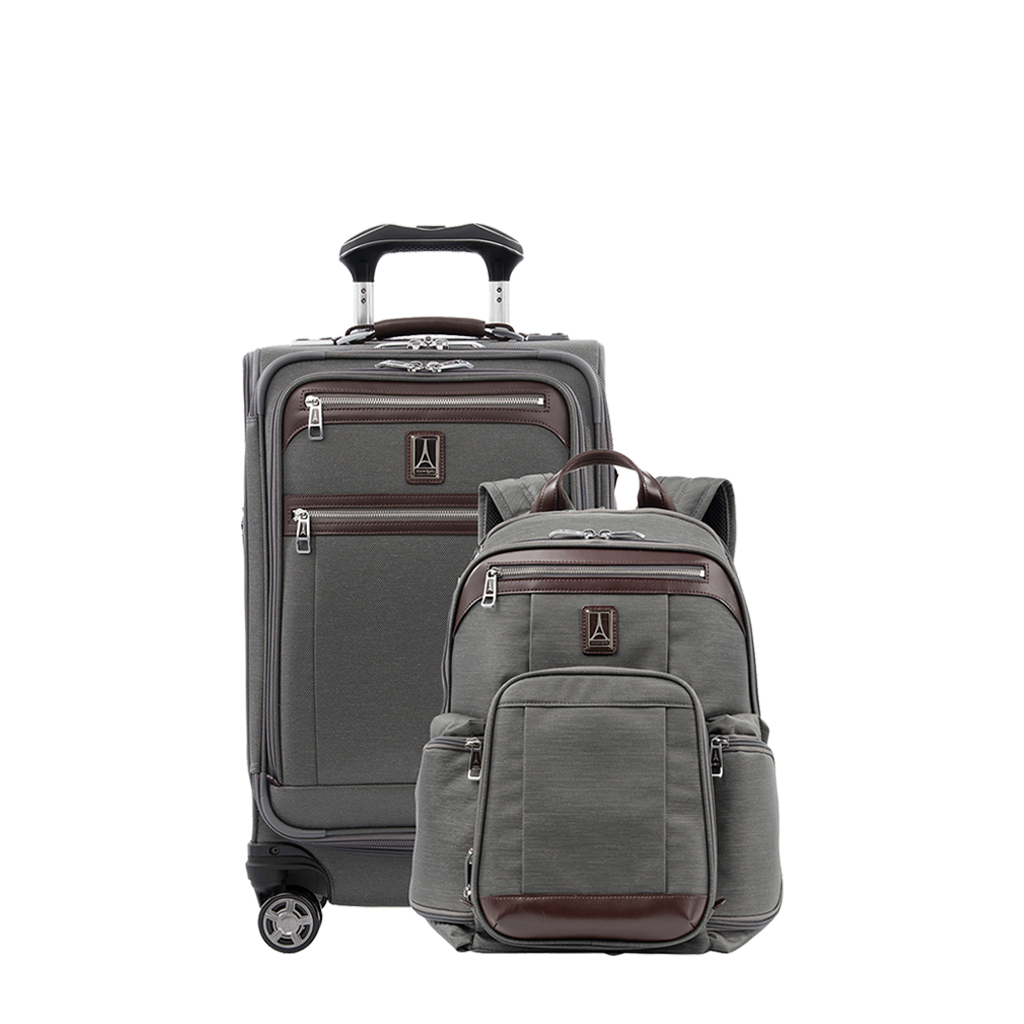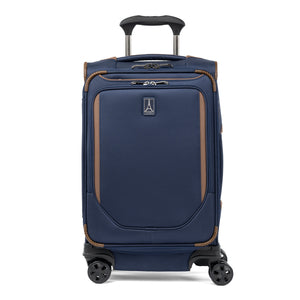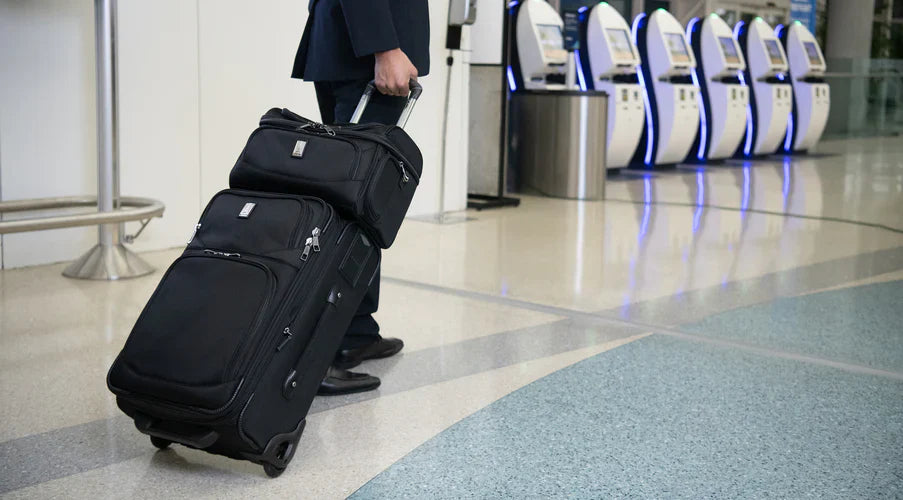Les aéroports peuvent être vastes, décourageants et écrasants au premier abord. Cependant, une fois compris, ils sont organisés de manière logique et faciles à parcourir. Si vous êtes un voyageur occasionnel ou si c'est la première fois que vous vous rendez à l'aéroport, procédez étape par étape pour vous y retrouver comme un pro.
Conseils pour l'aéroport
Dans cet article, nous vous présentons tout ce que vous devez savoir, avec des conseils sur les aéroports, de l'arrivée à la récupération des bagages après l'arrivée.
- Comment se rendre à l'aéroport- Trouver un moyen de transport
- Parking à l'aéroport - Planification de la meilleure option en fonction de votre voyage
- Enregistrement - Passer le cap de l'enregistrement en douceur
- Enregistrement des bagages - Ce qu'il faut savoir lors de l'enregistrement d'un bagage
- Contrôle de sécurité - Comprendre les règles de la TSA
- Embarquement - Trouver sa place dans la confusion
- L'arrivée- Que faire lorsque l'avion touche le sol ?
- Réception des bagages - Récupération des bagages et sortie
Comment se rendre à l'aéroport
Planifiez votre trajet jusqu'à l'aéroport en fonction de votre emplacement, de l'aéroport et de l'heure de votre vol.
- Se faire déposer - Se faire déposer par un ami peut être la solution la moins chère et la moins stressante.
- Covoiturage - Uber et Lyft proposent de nombreuses options pour se rendre à l'aéroport. Commandez votre course en prévoyant plus de temps pour les retards imprévus.
- Transports en commun - Les bus, les navettes et les trains publient des horaires réguliers pour faciliter la planification.
- Conduire soi-même - Vous pouvez également conduire vous-même si un parking est disponible. Vérifiez les tarifs pour éviter les surprises.
Parking à l'aéroport
Si vous prévoyez de vous garer à l'aéroport, prévoyez vingt minutes supplémentaires pour vous déplacer dans le parking de l'aéroport. Les navettes du parking de l'aéroport peuvent être retardées ou remplies par d'autres passagers ; il vaut mieux prévoir une marge de manœuvre dans votre emploi du temps pour ne pas être pressé. Veillez à vous garer dans le parking de longue durée ; le stationnement à l'aéroport dans le parking de courte durée vous coûtera cher.
Prévoyez suffisamment de temps pour les embouteillages, les retards et les itinéraires de bus ou de métro inconnus, afin d'arriver à temps.
À quelle heure dois-je me rendre à l'aéroport ?
Arrivez toujours à l'aéroport bien avant votre vol. Vous ne savez jamais s'il peut y avoir des retards lors de l'enregistrement ou aux points de contrôle de sécurité de la TSA. Le temps dont vous avez besoin varie selon que vous voyagez à l'intérieur du pays ou à l'étranger.
Voyages nationaux : Heure d'arrivée à l'aéroport
Pour les vols intérieurs, il faut arriver une ou deux heures avant le départ, mais au moins deux heures pendant les périodes de pointe ou les longs week-ends.
Voyages internationaux : Heure d'arrivée à l'aéroport
Si vous prenez un vol international, il est préférable d'arriver deux ou trois heures à l'avance. Vous aurez ainsi le temps d'enregistrer vos bagages, de confirmer les escales et de régler les éventuels problèmes de douane.
Enregistrement pour le vol
Vous pouvez attendre l'enregistrement à l'aéroport, mais l'enregistrement en ligne est généralement plus pratique. Vous pouvez imprimer votre carte d'embarquement chez vous ou recevoir une carte d'embarquement virtuelle sur votre téléphone.
Une pièce d'identité est nécessaire pour l'enregistrement à l'aéroport. Un permis de conduire suffit pour les vols intérieurs, mais vous aurez besoin d'un passeport pour les vols internationaux. Vos bagages enregistrés seront pesés et étiquetés, puis vous recevrez votre carte d'embarquement et vos tickets de récupération des bagages.
Si vous voyagez avec des compagnies aériennes différentes, vous devrez peut-être récupérer vos bagages et les réenregistrer auprès de la deuxième compagnie. Soyez prévoyant et assurez-vous que votre escale vous laisse suffisamment de temps pour prendre votre vol de correspondance.
Arriver au bon terminal
Si les petits aéroports sont plus faciles à parcourir à pied, les grands aéroports ont plusieurs terminaux et peuvent nécessiter l'utilisation de tramways ou de navettes. Recherchez les panneaux indiquant votre terminal et entrez par ce terminal si possible. Au moins, vous n'aurez pas à traîner vos bagages aussi loin !
Un peu de préparation avant votre voyage porte ses fruits. Avant la date de votre vol, trouvez l'emplacement de votre terminal (une recherche rapide en ligne devrait vous donner cette information). En planifiant votre itinéraire jusqu'au terminal, vous serez plus à l'heure le jour de votre voyage.
Vous enregistrez un bagage ?
Les deux bagages à main et les bagages enregistrés ont des avantages et des inconvénients et, selon la nature de votre voyage, vous pouvez être amené à voyager avec l'un ou l'autre type de bagage, voire les deux. Quel que soit le type de bagage que vous utilisez, vérifiez auprès de la compagnie aérienne avec laquelle vous voyagez pourconnaître les restrictions relatives au poids ou à la taille des bagages. Essayer d'ajuster vos bagages pour respecter les restrictions de poids dans la file d'enregistrement vous ralentira et vous causera un stress inutile.
Ajoutez du temps à votre emploi du temps si vous devez enregistrer des bagages. Les files d'attente longues et lentes peuvent grignoter le temps que vous aviez prévu pour passer les contrôles de sécurité de la TSA. En revanche, si vous passez rapidement l'enregistrement, le pire qui puisse vous arriver est de devoir attendre un peu plus longtemps à la porte d'embarquement avant de monter à bord.
Comment passer les contrôles de sécurité dans les aéroports
Après l'enregistrement, vous devez passer le contrôle de sécurité. Aux États-Unis, il s'agit des contrôles de sécurité TSA. Si vous voyagez à l'étranger, vérifiez quels sont les objets interdits dans votre pays de destination et aux États-Unis.
Avez-vous le TSA Precheck ou Global Entry ?
Vous pouvez passer la sécurité plus rapidement si vous vous inscrivez à l'avance au programme TSA Precheck ou Global Entry. Ces deux programmes permettent de passer plus rapidement les contrôles de sécurité dans les aéroports qui y participent. Le programme TSA Precheck peut vous faire gagner plusieurs minutes dans les files d'attente, en particulier pendant les périodes de forte affluence.
Règlements TSA
Le règlement de la TSA comprend une longue liste d'articles interdits. Des articles tels que les armes à feu et les articles de sport qui pourraient être utilisés comme armes sont interdits pour des raisons évidentes. D'autres articles, comme les liquides et les gels, ne sont autorisés qu'en quantités limitées.
Tous les liquides et gels doivent être conservés dans des contenants de 3,4 onces ou moins et doivent tenir dans un seul sac en plastique transparent d'une contenance d'un quart. Placez ce sac sur le dessus de votre bagage à main afin de pouvoir y accéder facilement lors du passage du contrôle de sécurité. Les contenants plus grands, y compris les bouteilles d'eau, ne seront pas confisqués s'ils sont vides.
Peut-on apporter de la nourriture dans le cadre de la TSA ?
Tous les aliments gélifiés - y compris le Jello, la tarte au potiron et le beurre de cacahuète - qui ne respectent pas la règle des 3-1-1 seront confisqués. Essayer de faire passer ces produits au contrôle de sécurité ne fait que vous ralentir. Les liquides prescrits médicalement nécessaires, y compris l'eau, les aliments pour bébés et les nutriments liquides, peuvent passer le contrôle de sécurité. Sachez toutefois que tous ces articles devront être contrôlés et que le jugement final sur ce qui est ou n'est pas médicalement nécessaire revient à l'agent de la TSA.
Passer la sécurité
Comme les files d'enregistrement, les files de sécurité peuvent être longues et lentes. Vous présenterez votre pièce d'identité et votre carte d'embarquement au début de la file, puis vous avancerez jusqu'à ce que vous vous trouviez juste devant les appareils à rayons X. Une fois là, soyez prêt à faire ce qui suit :
- Enlevez votre veste, votre ceinture et vos chaussures.
- Videz vos poches.
- Si vous voyagez avec une gourde, assurez-vous qu'elle est vide.
- Mettez tous les documents dans votre sac.
- Placez votre veste, votre ceinture, vos chaussures et votre sac à main dans l'un des plateaux prévus à cet effet.
- Si vous avez des liquides, des aérosols, des gels ou des appareils électroniques, placez-les dans un deuxième plateau.
- Passez au détecteur de métaux lorsque vous y êtes invité.
- Se conformer à toutes les fouilles aléatoires, y compris les radiographies corporelles, les fouilles de sacs et les fouilles par palpation.
Portez le moins de métal possible pour éviter les retards lors du passage de la sécurité et répondez poliment aux questions. Une fois le contrôle de sécurité effectué, récupérez vos sacs et vos objets et éloignez-vous rapidement du portique de sécurité pour laisser la place aux autres passagers.
Comment trouver son chemin dans un aéroport jusqu'à la porte d'embarquement ?
Le numéro de votre porte d'embarquement est imprimé sur votre carte d'embarquement, mais vérifiez cette information sur les écrans de départ des vols de l'aéroport. Les numéros de porte et les terminaux peuvent changer en fonction des besoins opérationnels de l'aéroport. Pensez à revérifier votre numéro de porte si vous avez imprimé votre carte d'embarquement chez vous ou en ligne.
Pour ce qui est de la navigation dans un aéroport, des panneaux avec des flèches indiquent les directions à suivre pour atteindre les différents numéros de porte. En général, ces panneaux concernent plusieurs numéros de porte. Par exemple, vous pouvez voir un panneau indiquant les portes 41 à 50 avec une flèche de direction. En cas de doute, demandez à l'un des kiosques d'information de l'aéroport.
Lorsque vous naviguez dans un aéroport, prenez les mesures suivantes :
- Trouvez votre porte avant de vous rendre dans les magasins ou les restaurants.
- Vérifiez régulièrement si les moniteurs de vol ont changé.
- Soyez à votre porte d'embarquement à l'heure d'embarquement, et non à l'heure de départ du vol.
- Demandez des indications si nécessaire.
Conseils pour l'embarquement
En attendant l'embarquement, organisez votre bagage à main de manière à avoir sous la main tout ce dont vous avez besoin pour le vol. De cette façon, vous pouvez ranger vos bagages dans le compartiment supérieur de l'avion et ne pas avoir à le récupérer avant l'atterrissage.
L'embarquement se fait par groupes ; votre groupe est indiqué sur votre carte d'embarquement. Lorsque votre numéro est appelé, scannez votre carte en entrant dans la passerelle et montez dans l'avion. Repérez votre numéro de siège, rangez vos bagages et, aussi vite que possible, installez-vous dans votre siège pour permettre aux autres passagers d'embarquer. Si vous avez des questions, posez-les à l'hôtesse ou au steward ; ils sont là pour rendre votre voyage plus confortable.
Changement de vol en cas d'escale
Comme indiqué ci-dessus, vous devrez peut-être changer de vol pour atteindre certaines destinations. Le temps qui s'écoule entre l'atterrissage de votre premier vol et l'embarquement de votre vol suivant est appelé "escale", et lorsque les escales sont courtes, prendre votre vol de correspondance peut être une course effrénée.
Prévoyez au moins quatre-vingt-dix minutes de temps d'attente. Les files d'attente, les arrivées tardives, la récupération et le réenregistrement des bagages et la recherche de la prochaine porte d'embarquement sont autant de facteurs qui font perdre un temps précieux.
Lorsque vous arrivez à votre aéroport de correspondance, prenez les mesures suivantes :
- Suivez les panneaux "Flight Connections". Vous devrez peut-être récupérer vos bagages enregistrés.
- Si vous n'avez pas obtenu de carte d'embarquement pour le prochain vol, ou si vous devez enregistrer vos bagages sur le nouveau vol, rendez-vous au comptoir de transfert de la compagnie aérienne.
- Selon l'aéroport, vous devrez peut-être passer par le contrôle des passeports, des points de sécurité supplémentaires ou produire des visas de transit.
- Passez le contrôle de sécurité.
- Vérifiez la porte de départ sur les écrans de vol et rendez-vous à la porte appropriée.
Réception des bagages : Retrouver ses bagages enregistrés
À votre destination finale, débarquez et suivez les panneaux jusqu'à la zone de récupération des bagages. Récupérez vos bagages et, si vous êtes dans un autre pays, passez la douane et le contrôle des passeports. Remplissez les formulaires d'arrivée requis, déclarez vos marchandises et préparez votre visa de voyage si nécessaire. Si vous avez acheté des produits hors taxes, récupérez-les à la sortie de l'aéroport. Parcourez les bagages enregistrés de haute qualité de Travelpro.





